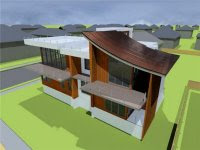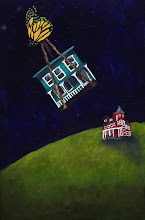

As a healthy ecosystem seems perilously close to being a thing of the past, please consider acting locally. The National Wildlife Federation is holding a challenge of turning our backyards into safe havens all across the country. I was surprised to find that our suburban backyard was able to gain certification of a wildlife habitat by the NWF with one or two tweaks. The checklist is incredibly straightforward-- seeds or berries, trees and shrubs, nesting location, water source, organic fertilizer-- it is quite easy to meet the standard, leaving me to wonder why shouldn't we all get on board. The Audubon Society also has information on their site on how to make your backyard bird-friendly. With the marsh areas of the Gulf chewed up with oil, perhaps we can do our part for bird populations in our own region.





2 comments:
This is a lovely and inspirational post, Nadine. Conservation really does begin at home, and it doesn't have to be expensive or difficult. We certified our yard with the National Wildlife Federation a few years ago, and now get lots of curious inquiries when people see the sign to that effect. It's a good topic of conversation. I always mention that there are numerous adjuncts to this program, equally easy to implement and with fantastic rewards for wildlife.
The Monarch Waystation program is offered by Monarch Watch, through the University of Kansas. Monarch butterflies are important pollinators that have an amazing life cycle including an extremely long migration between breeding grounds east of the Rockies in the US and overwintering sites in Mexico. But they are extremely vulnerable to habitat loss. Through the Waystation program you simply plant milkweed (vital to the caterpillars) and nectar plants on which adults feed. It's a beautiful addition to any garden. http://www.monarchwatch.org/waystations/
The Cornell Lab of Ornithology invites citizens to participate in Project Feederwatch. You create bird-friendly habitat--with feeders, water, and plants that provide food and shelter--then between November to April make period counts of the bird species that come to your yard. Cornell scientists use this data to better understand the diversity and distribution of resident and migratory birds. http://www.birds.cornell.edu/pfw/
You are so right that it's healing to build and improve natural habitat around our homes when so many other environmental events are out of our control.
Cris, thank you so much for your informative post. Renewing our local ecology should ideally be a collective response to be the most effective. And I've added a link to Audubon's tips to a bird-friendly yard for more tips. Best,
Nadine
Post a Comment